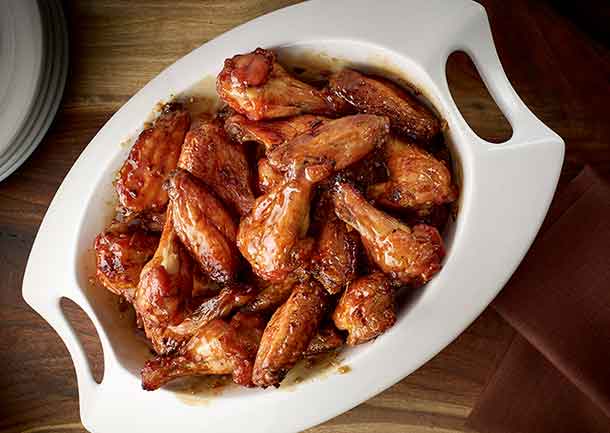

THUNDER BAY – FOOD NOW – Blenders today are ubiquitous and taken for granted, but there was a time when these humble kitchen tools were central to aspirational American cooking — with one cookbook elevating the appliance to its proper place in the kitchen.
Ann Seranne, a lesser-known but prolific cookbook author, published “The Blender Cookbook” in 1961 with Eileen Gaden after they both left editorial positions at Gourmet Magazine to form a food consulting company. Inspired by their consulting for Waring, the first major American blender manufacturer, Seranne and Gaden began work on a blender cookbook. Invented in 1922 by Stephen Poplawski, blenders populated upwards of 5 million American kitchens by midcentury. In his musings on the appliance, however, Craig Claiborne of The New York Times bemoaned that the average housewife used her blender for little more than daiquiris and whiskey sours. At the same time, gourmands from Julia Child to Alice B. Toklas embraced the appliance’s abilities, even as they favored more traditional techniques.
Describing herself as “a devoted disciple of the electric blender,” Seranne assured readers that next to the stove and refrigerator, the blender was the kitchen’s most essential appliance, a “treasure” worthy of a permanent place on the kitchen counter. Wrapped up in both haute cuisine and convenience cooking, Seranne and Gaden brought this enthusiasm to home cooks with “The Blender Cookbook.” With dozens of black and white illustrations, the text features more than 500 recipes not only for dips, soups, sauces and drinks, but also for scrambled eggs, turkey stuffing, crab-and-macaroni casserole, meat loaf, beef Stroganoff, lamb curry, white-fish quenelles with sauce Normande, and fruit tarts.
In his initial review, titled “Blender Magic,” Claiborne honored Seranne’s contribution, asserting that the cookbook “fills a culinary void that has been apparent since the first blender was placed on the market nearly three decades ago.” Overall, he rated the cookbook as the “most comprehensive and imaginative and by all odds the best” among blender texts. Although Claiborne critiqued one of the recipes (a blended minestrone recipe that he quipped was simply “not minestrone”), he lauded Seranne’s hollandaise sauce. Easily whipped up in mere seconds with the blender’s aid, Claiborne proclaimed, “This alone should qualify her for some sort of gastronomic hall of fame.”
Far beyond a gimmicky contribution, “The Blender Cookbook” appeared in Claiborne’s round-up of the year’s best cookbooks, alongside seminal gastronomic tomes, such as the English translation of “Larousee Gastronomique,” “Mastering the Art of French Cooking” (which he called “a masterpiece”), the newest edition of “The James Beard Cookbook,” and Claiborne’s own “The New York Times Cook Book.”
The 1960s cookbook boom
Among such esteemed company, “The Blender Cookbook” came into being during a meaningful culinary moment. In her Oct. 23, 1961, New York Times article, “Food: Cookbook Boom,” June Owen wrote that more cookbooks were to be published that year than ever before.
Nika Hazelton, a well-known cookbook author and food writer, echoed this sentiment, albeit more colorfully, in 1963, when she observed, “Americans are taking to cookbooks the way the Romans took to orgies.” Orgies aside, Owen situated cookbook publishing and sales within broader changes in American culture. She argued that etiquette rules, like those penned by Emily Post, which quieted discussions of cooking at the hostess’ table, had shifted. As Americans developed a “tremendous interest in food,” kitchen labors became a topic of newly suitable conversation over dinner.
In her analysis of these burgeoning food interests, Owen also engaged David Reisman, Nathan Galzer and Reuel Denney’s “The Lonely Crowd,” a sociological study, both landmark and contested, first published in 1950 and again in 1961, in the midst of this cookbook boom. Reisman traced growing interest in cooking to the rise of servant-less households among the middle class, which shifted the responsibility for cooking. He also cited the increasing abundance of food that made eating well an accessible luxury for more than just the supremely affluent. He argued, as sociologist Pierre Bourdieu also would, that under such conditions, food became a primary method for demonstrating taste and social status.
Cookbooks in midcentury America — focusing on desserts, eggs, ethnic cuisine or even blenders — served as both the means and symbols of this upward mobility. Or as Hazelton quipped on the price of cookbooks, “You’ve got to spend a little to build up your reputation as a gourmet, which appears to be the current ambition of every red-blooded American” — a sentiment not too far afield from today’s mainstreamed and seemingly ever increasing interest in food and cooking, sipping and tasting, cookbook buying and kitchen outfitting.
Ann Seranne, kitchen sorceress
Beyond the prominent position of “The Blender Cookbook” in the 1960s culinary canon, what do we know of the woman behind the blender? Originally from Canada, Ann Seranne came to the United States in the 1930s and worked her way to executive editor at Gourmet before she began her consulting partnership with Gaden in the mid-1950s. Throughout her career, Seranne published not just “The Blender Cookbook,” but more than two dozen cookbooks, including “Ann Seranne’s Good Food & How to Cook It,” “Good Food Without Meat,” “The Complete Book of Home Preserving” and “The Art of Egg Cookery.”
Claiborne wrote fondly of her in The New York Times, describing her as a tall (she was 5′ 8″), blond, handsome woman; “a born cook;” an indefatigable food consultant; and “a kitchen sorceress who would rather cook than eat.” His description of her 1963 cookbook, “The Complete Book of Desserts,” may have applied to her as well: “At once as down to earth as an apple fritter and as sophisticated as a cream-filled génoise.”
Impressive as they are, Seranne’s cookbooks were but one of her life’s accomplishments. She nurtured twin passions for cooking and breeding Yorkshire terriers, five of which shared her New York home and whose breeding line claimed more than 60 championships. Her canine brood supped on a ragout of beef, lamb shanks, parsley, carrots and garlic; garlic being her dogs’ most favored flavor. When famed dog show reporter Walter Fletcher purportedly asked Sarenne of the similarities between cooking and dog breeding, she replied, “Both contain equal parts science, art and luck.”
Copyright Emily Contois via Zester Daily and Reuters Media Express





